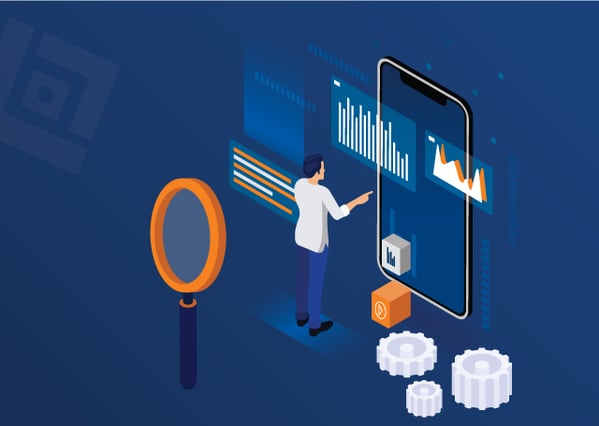
Software testing is a challenging and complex process that requires knowledge of many different areas. From understanding the business to knowing what types of bugs can be introduced, there's a lot to consider when testing a software.
The difficulty in testing software has increased as developers produce more intricate codes with more outstanding features. The number of defects found during development increases because the complexity increases; however, it decreases if the developer uses static analysis tools or other automated methods for finding and fixing errors early on in the development cycle.
Software testers need to know how to use all these tools and techniques effectively - especially given that they're often delivered by vendors who don't always provide customer support for their products, but how do we forecast future trends? In this article, We'll look at some of the top software testing trends that will be seen in the year 2022.
Testing Centers of Excellence or TCoE
Testing is becoming more of a team effort. It's no longer the responsibility of one single tester who will do everything by themselves on their computer. Organizations are shifting toward an agile model, which promotes agility, collaboration, and continuous improvement, so testing must adapt accordingly.
Testing is often left to testers to execute during sprints or at the end of a release, so testers need to understand how the process works and what they should be testing. Organizations will also look for experienced testers to help them establish Testing Centers of Excellence (TCoE), which focuses on bringing all the resources needed - developers, testers, automation tools, and customers - into one place where everyone can work together.
Agile and DevOps
Most organizations are going through some initiative to become more agile. Whether it's a complete overhaul or a slight push, agile is the future of software development and testing. Developers have been using DevOps techniques to automate processes such as CI/CD pipelines to get more work done faster.
This has positively impacted the testing process, allowing testers to create and execute more tests. It also empowers them to automate their test cases which enables them to run through regression suites multiple times per day without any effort - even if they're not developers.
The DevOps toolsets that continuously integrate and deploy code can test, execute, and report from a CI/CD pipeline without any human intervention. Software testers will need to start learning how to use these tools.
Artificial Intelligence and Machine Learning Techniques in Testing
Artificial Intelligence (AI) and Machine Learning (ML) techniques are coming into play to help testers in their daily activities. AI is used in several stages of the testing process.
It can be used to build intelligent test cases, automate test case execution, find bugs, and suggest fixes based on software business data. It's no longer a science fiction concept as developers and testers use AI tests. Still, it will open doors for the industry as more resources are dedicated to research and development in this area.
Machine learning is also playing a part in software automation testing. Testers can use different ML techniques to automate regression suites, test cases, and even find bugs in software.
With ML, testers can create bots that interact with the application and record every step they perform. From there, the recorded logs will be fed into a machine learning algorithm that uses all the data to build a regression suite that it can run on its own.
Increased Automation
With more automated testing techniques, testers will need to learn how to use these new tools. For example, bots can be used in conjunction with virtual technology that allows testers to replay their actions on the same web page but with different input values - helping them identify differences between expected and actual outputs. The bots record the tester's every action, including mouse movements and clicks, to spot bugs that don't appear on any log. Testers will be responsible for putting these bots to work and monitoring and maintaining them.
Virtual testing also allows testers to do exploratory testing on the same platform without installing it locally. This is an excellent option for early-stage or pilot projects that can't go through extensive dedicated and manual testing.
Mobile Test Automation
Continuous releases of mobile apps have raised the bar for automated testing. Testers will need to learn how to write and execute robust test plans in a short time frame to meet tight deadlines.
Through automation, testers can run hundreds of tests on an app every day without much effort. It's essential to make sure that test plans adequately cover all application areas to ensure there are no bugs.
Mobile test automation tools allow testers to execute automated tests on real devices hosted in the cloud. This eliminates manual intervention and saves time. Using these tools, one can write scripts, record actions, and convert them into automated tests.
Cybersecurity and Compliance Testing
Businesses and consumers are more concerned about Privacy and Security than ever before. Testers will need to become more familiar with how their applications handle customer data, where they store it, and who has access to it.
For example, in the European Union (EU), businesses have a responsibility to ensure data is protected from hack attacks as per the General Data Protection Regulation (GDPR) effective May 2018.
The US has also introduced the Health Insurance Portability and Accountability Act (HIPAA), which ensures data security of health care records of its citizens.
Testers need to be aware of these regulations to test their applications properly, identify security loopholes early on, and fix them before launch.
Big Data Testing
With the increase of data generated by more users and devices, organizations need to store this data to make it easily accessible for analysis.
When making critical business decisions based on analytics, one must be confident that all the data accurately represents user behavior. As such, testers will need to integrate their quality assurance (QA) efforts with the business's significant data initiatives.
One way is by using performance testing tools to test applications that use machine learning algorithms. This will give testers the ability to pinpoint sources of errors in machine-generated predictive analytics, which can lead to faulty business decisions.
Mobile apps generate more data through logins, location tracking, and social media integration. Testers can use Performance testing tools to check the performance of these apps under different load conditions.
Quality Control Testing Centers
With testing becoming a more specialized domain, one can expect the more experienced testers to focus on locating and fixing bugs.
There will be a shift from manual QA activities to more automated testing solutions as organizations need their applications tested frequently and with more incredible speeds.
The most effective way is to create Quality Control (QC) Centers that provide 24/7 support to the development team. QC Centers use bots and automation tools to quickly identify, segregate, and isolate bugs before introducing them into production code.
QAOps
QA organizations are now organized as their business units, with the same importance as other departments.
As traditional QA teams are expanding to meet the increasing demand for testing services, they need to be more aligned with the development process to speed up delivery times.
This requires coordinating automated and manual testing at scale.
The only way to do this is by implementing QA Operations.
QA teams will need to utilize automation tools and self-healing cloud technology to resolve production problems in real-time.
With more automation, testers can focus on complex testing tasks rather than routine work, making them more valuable team members. It also allows them to improve their skills and offer better testing services.
Robotic Process Automation
More and more companies are integrating robotic process automation (RPA) to improve their workflow and cut costs. But the fear of replacing human jobs is sometimes exaggerated.
Robotic Process Automation can mean different things to different people depending on how it's used in an organization. For example, RPA can be used just for monitoring purposes but not to replace testers.
The future of RPA may include the integration of chatbots and natural language processing (NLP) in virtual assistants, which could help testers complete basic tasks like creating tests cases. But for now, it's best to set expectations accordingly.
Conclusion
The world of software testing is constantly changing.
As the workplace environment changes, so must testers adapt to it. There will be more automation in testing, and infrastructures will become self-healing. Organizations will set up QC centers to deliver 24/7 support for development teams, resulting in RPA integrated into businesses that don't require human tester intervention.
Testers are now being seen as more than just bug-catchers but are also expected to know about data analytics and machine learning. With the right tools, testers can help organizations make more strategic decisions to prevent faulty business practices.
Partnering with QASource, we provide comprehensive software testing services to businesses of all sizes. Our high-quality software engineers are professionals in all sorts of software testing. Contact us today to connect with an expert!



